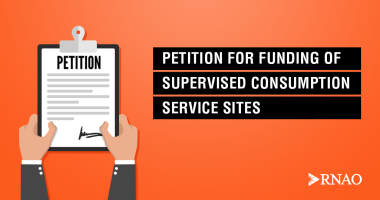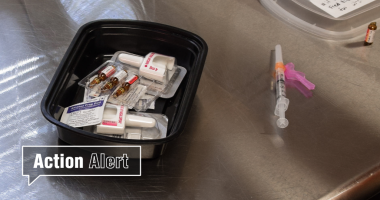
The issue
For over a decade, Canadians have been dying at an increasing rate from opioid overdoses. Between January 2016 and December 2021, nearly 30,000 Canadians died from an opioid overdose. Ontario is not immune to this tragedy. Within the first nine months of 2021, 2167 people died from an opioid-related overdose in the province - an average of 8 people per day. A contaminated and toxic illicit drug supply is a major driver of the opioid overdose crisis — with fentanyl contributing to 85.9% of deaths in 2020.
Evidence shows that the number of overdose deaths has risen dramatically during the COVID-19 pandemic due to a myriad of factors. Rates are disproportionately high in communities with greater ethno-cultural diversity. RNAO continues to advocate for a harm reduction approach that respects basic human dignity and the rights of people who use substances.
Take action
Fund supervised consumption sites immediately, premier
Sound the alarm on surging opioid overdose deaths
Opioid overdose policy documents
Other policy documents related to the opioid overdose crisis:
- Letter: ODSP Letter from RNAO to Premier Ford, July 2022
- #DecriminalizeNow campaign
- End the opioid overdose crisis in 2020, March 2020
- We must also remember those who didn’t survive, February 2020
- New regulations under the Controlled Drugs and Substances Act, October 2020
- Letter: Expedite the passage of Bill 105, the Mandatory Police Training Act, 2019, December 2019
- Demand an end to overdose deaths in Windsor Action Alert, November 2019
- Re: EC7.10 Implementation of Coroner's Recommendations from the Faulkner and Chapman, September 2019
- Learning from the deaths of Grant Faulkner and Bradley Chapman, September 2019.
- RNAO Submission to the Toronto Board of Health: Saving Lives with a Public Health Approach to Drug Policy, September 2018
- Implementing Supervised Injection Services, February 2018.
- Engaging Clients Who Use Substances, March 2015
- Supporting Clients on Methadone Maintenance Treatment, July 2009




